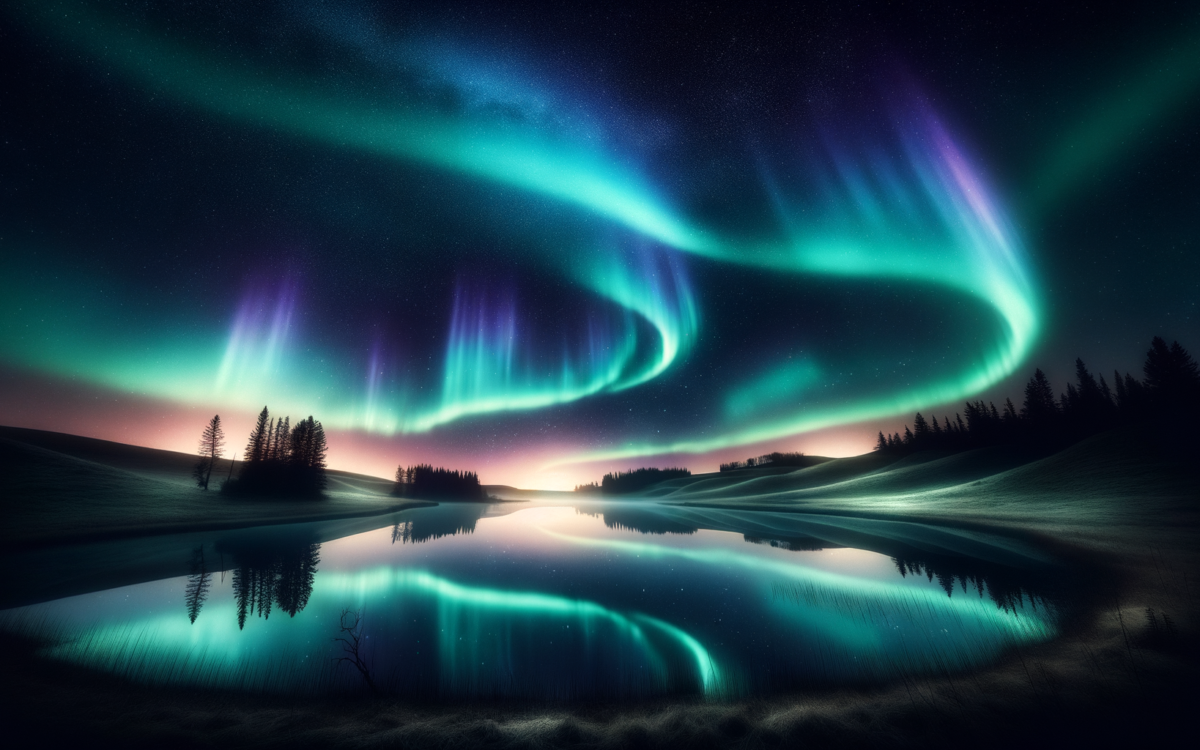Stellar Spectacle: The Northern Lights Dazzle Across the U.S.
- Witnessing Wonder: Americans experienced the magnificent northern lights, a phenomenon many see once in a lifetime, with a repeat performance possibly on the cards for Saturday night.
- Geostorm Gaze: Extreme G5 geomagnetic storms have painted the skies, making the auroras visible as far south as Florida and Texas, with the potential for sightings to continue into early next week.
- Cosmic Cause: Coronal mass ejections (CMEs) trigger these breathtaking auroras and pose a risk to our power grid and infrastructure, influenced by a vast sunspot cluster.
The Cosmic Curtain Rises Again
Last Friday night, a cosmic ballet unfolded across the American skies, as the northern lights, or aurora borealis, offered a rare and captivating show from coast to coast. For those who missed this stunning display or are eager for an encore, the universe might just be setting the stage for another performance tonight.
According to the NOAA’s Aurora Forecast, the majority of observers from the previous night might get a second chance to witness the celestial dance this Saturday. Weather conditions willing, residents of states like Ohio, Pennsylvania, Colorado, and Missouri could be in for a treat.
When the Skies Alight
The recent “extreme” G5 geomagnetic storms, the likes of which have not been seen since 2003, have caused not just awe among stargazers but also significant concerns due to their impact on power grids in the past. These storms are powered by coronal mass ejections, or CMEs, vast eruptions of magnetic fields and plasma from the Sun’s corona, casting energetic particles across the solar system.
If these geomagnetic disturbances reach G5 levels again during the Saturday overnight hours, the curtains of the northern lights could descend as far south as Florida and Texas. This spectacle isn’t just fleeting; the Space Weather Prediction Center suggests that high solar activity could sustain aurora sightings into Sunday and possibly early next week.
The continuous threat posed by these geomagnetic storms hinges on a formidable sunspot cluster, dwarfing our planet by 16 times. This celestial giant’s slow pirouette out of Earth’s view will determine the duration of our auroral delight.
Best Viewing Strategies
For those residing in areas where the auroras might not blaze as brightly, the prime window for catching this cosmic phenomenon is between 10 p.m. and 2 a.m. local time. And for observers whose eyes might not catch the subtle glow, modern cell phones might just reveal what’s veiled, offering a clearer glimpse into the heavens.
Jon’s Take
As someone who’s always gazing upwards, the chance to see the northern lights stretch across unfamiliar horizons is a thrilling prospect. It’s a vivid reminder of the dynamic and powerful forces at play beyond our Earthly domain. These events not only captivate our imagination but also highlight our ever-growing need to understand and coexist with the cosmic forces that shape our world. So, let us keep our eyes on the skies, and remember, the truth isn’t just out there – it’s right here, displayed in the auroral lights painting our night sky.




